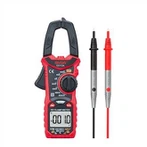How to choose the appropriate gas detection instrument and technical exchange
First point: Determine the main objectives
Based on the process taken and the gas to be detected, health and safety management records may also require remote or off-site alarm notifications and event data records/reports. Another factor that may affect the need for enhanced reporting functionality is regulatory compliance and insurance coverage.
Second point: Understand the risks of the location
Before considering gas detectors, a risk assessment is necessary. All employers are obligated to conduct risk assessments to identify potential hazards, including potential gas, steam, or oxygen deficiency hazards. If it is determined to be a gas hazard, gas detection can be used as a method to reduce the risk.
The alarm has three preset alarm points that can be modified through the program, corresponding to three LED indicator lights. The toxic gas alarm consists of a detector and an alarm control host, and is widely used in the petrochemical industry where toxic gases exist, such as oil, gas, chemical, and oil depots. It is used to detect leaks in indoor and outdoor hazardous areas and is an important instrument to ensure production and personal safety. When toxic gases are present in the tested area, the detector converts the gas signal into a voltage or current signal and transmits it to the alarm instrument, which displays the percentage concentration value of the lower explosive limit of the toxic gas. When the concentration of toxic gases exceeds the alarm set value, an audible and visual alarm signal will be triggered, and the on duty personnel will take timely safety measures to avoid explosion accidents.
Third point: Consider environmental conditions
The performance, accuracy, and reliability of any gas detection equipment will be affected by the environmental conditions in which it is located. The temperature, humidity, and pressure level of the location can directly affect the type of equipment that should be selected. Other factors such as potential changes caused by the manufacturing process itself, diurnal/nocturnal fluctuations, and seasonal variations may also affect the types of equipment applicable.
Fourth point: Determine the gas to be tested and its possible sources
Gases should be determined through risk assessment, but experienced gas detection equipment manufacturers and their licensed distributors can often leverage their past experience in similar applications to assist in this process. However, it is important to remember that identifying all potential hazards is the responsibility of the end user.






